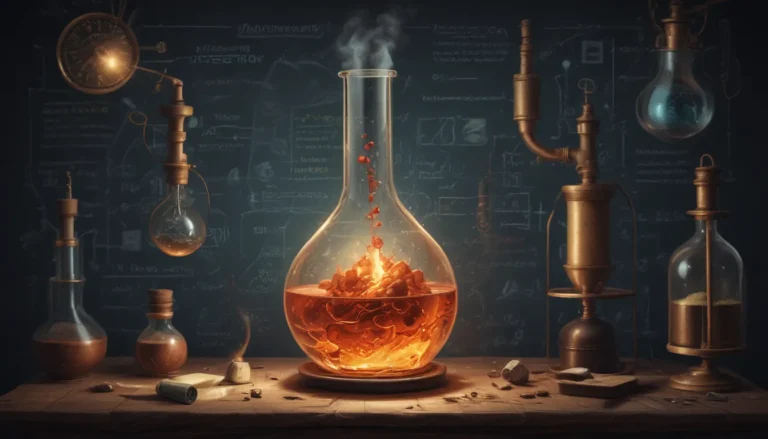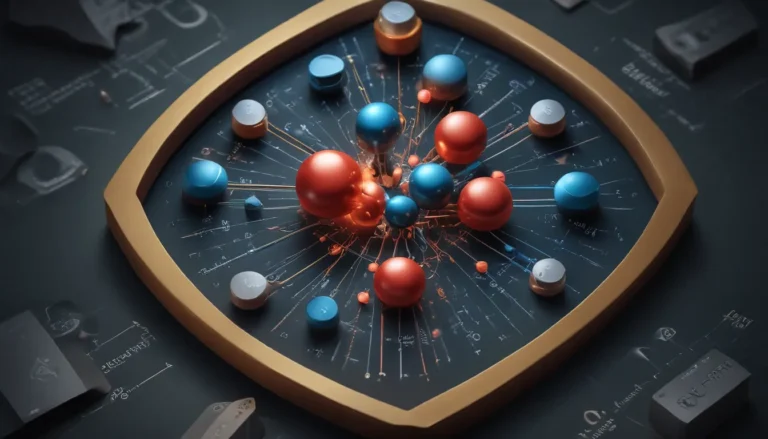A Note About Images: The images used in our articles are for illustration purposes only and may not exactly match the content. They are meant to engage readers, but the text should be relied upon for accurate information.
Chemistry is full of incredible principles that help us unravel the mysteries of the natural world. One such fundamental concept is Raoult’s Law, named after the visionary French chemist François-Marie Raoult. This law serves as a cornerstone in understanding the behavior of solutions, shedding light on the intricate relationship between the vapor pressure of a solvent and the mole fraction of a solute in a solution. Delving into the realm of Raoult’s Law can enhance our comprehension of colligative properties, such as vapor pressure depression and boiling point elevation, unlocking a treasure trove of knowledge for chemists and enthusiasts alike.
Unveiling the Origins of Raoult’s Law
François-Marie Raoult, a pioneering French scientist of the late 19th century, laid the groundwork for our current understanding of thermodynamics with his discovery of Raoult’s Law. His innovative work revolutionized the way we perceive solutions and their behavior, setting the stage for further advancements in the field of chemistry.
Demystifying Raoult’s Law
At its core, Raoult’s Law elucidates that the partial vapor pressure of a component in an ideal solution is directly correlated to its mole fraction within that solution. Simply put, this law illuminates how the presence of a solute impacts the vapor pressure of a solvent, offering valuable insights into solution dynamics.
Real-World Applications of Raoult’s Law
The implications of Raoult’s Law extend far beyond theoretical frameworks, finding practical applications in a myriad of scientific and industrial domains. From unraveling the intricacies of colligative properties to guiding pharmaceutical formulations and optimizing food science processes, Raoult’s Law serves as a guiding light for researchers and industry professionals.
Delving into Deviations from Raoult’s Law
While Raoult’s Law posits ideal behavior of solutions, deviations can arise in real-world scenarios, leading to either positive or negative outcomes. These deviations hinge on the intricate interplay between solute and solvent particles, shaping the overall dynamics of the solution.
Navigating Ideal and Non-Ideal Solutions
In the realm of ideal solutions, Raoult’s Law reigns supreme, showcasing a perfect alignment between vapor pressure and mole fraction. However, non-ideal solutions present a different landscape, where interactions between solute and solvent particles give rise to deviations from the law’s predictions, offering a nuanced perspective on solution behavior.
Unveiling Raoult’s Law in Volatile Components
Raoult’s Law finds particular relevance in solutions harboring volatile components, characterized by their propensity to evaporate. The direct influence of mole fraction on the vapor pressure of volatile components underscores the pragmatic utility of Raoult’s Law in understanding and manipulating solution properties.
Illuminating the Role of Temperature in Raoult’s Law
Temperature serves as a pivotal factor in the application of Raoult’s Law, with its effects most pronounced at low concentrations and high temperatures. By minimizing the impact of intermolecular forces, temperature plays a crucial role in ensuring the accuracy of Raoult’s Law predictions.
Harnessing Colligative Properties Through Raoult’s Law
The predictive prowess of Raoult’s Law extends to colligative properties, offering a roadmap to navigate osmotic pressure and vapor pressure lowering. This invaluable tool empowers scientists and engineers to unravel the complexities of solutions and harness their properties for diverse applications.
Tracing the Interplay Between Raoult’s Law and the Ideal Gas Law
A symbiotic relationship exists between Raoult’s Law and the ideal gas law, both rooted in assumptions of ideal behavior and offering profound insights into substance properties and behaviors. This synergy illuminates the intricate tapestry of chemical dynamics, enriching our understanding of the natural world.
Embracing the Limitations of Raoult’s Law
Despite its robust utility, Raoult’s Law is not without its limitations. Predicated on ideal behavior, this law overlooks factors such as non-volatile solutes, volatile solvents, and complex mixtures, signaling the need for a nuanced approach in real-world applications.
Unveiling the Industrial Significance of Raoult’s Law
Industries spanning chemicals, pharmaceuticals, and petroleum leverage Raoult’s Law as a linchpin in their processes, facilitating accurate predictions and control of solution behavior. This strategic application ensures the efficiency and safety of industrial operations, underscoring the indispensable role of Raoult’s Law in the industrial landscape.
Pioneering Environmental Insights Through Raoult’s Law
In the realm of environmental science, Raoult’s Law emerges as a beacon of understanding, particularly in dissecting air pollution dynamics. By unraveling the vapor pressure of volatile organic compounds, researchers glean valuable insights into atmospheric composition, paving the way for environmental stewardship.
Crafting a Narrative around Phase Equilibria with Raoult’s Law
Raoult’s Law serves as a guiding compass in the study of phase equilibria, shedding light on the coexistence of multiple phases within a system. This nuanced perspective offers profound insights into component distribution across phases and the requisite conditions for phase transitions, enriching our comprehension of the natural world.
Embracing the Theoretical Foundations of Raoult’s Law
Rooted in the bedrock of thermodynamic principles and the concept of partial pressures, Raoult’s Law embodies a fundamental understanding of solution behavior and component species dynamics. This theoretical underpinning forms the scaffolding for further exploration and innovation in the realm of chemistry.
Validating Raoult’s Law through Empirical Experiments
Throughout history, a myriad of experiments have been conducted to substantiate the accuracy of Raoult’s Law. By measuring vapor pressures across varying concentrations and temperatures, researchers offer empirical validation for this foundational law, enriching our understanding of solution dynamics.
Navigating Binary Mixtures with Raoult’s Law
The study of binary mixtures finds a steadfast companion in Raoult’s Law, enabling scientists to predict and unravel the behavior and properties of dual-component solutions. This partnership fuels advancements in diverse fields, from material science to biotechnology, sculpting a landscape of innovation and discovery.
Fostering Future Frontiers in Raoult’s Law
As scientific frontiers continue to expand, Raoult’s Law stands poised for further refinement and extension. These future developments promise to deepen our understanding of solutions and their behaviors, heralding a new era of innovation and discovery on the horizon.
Captivating Conclusions on Raoult’s Law
In summation, Raoult’s Law stands as a beacon of wisdom in the realm of chemistry, guiding us through the intricate dance of solutions and their properties. This foundational principle offers a mathematical roadmap to decipher the vapor pressure and mole fraction dynamics within solutions, fostering a deeper appreciation for the elegance of chemical interactions. By immersing ourselves in the extraordinary facts surrounding Raoult’s Law, we pave the way for further exploration and discoveries in the ever-evolving landscape of chemistry.
Unlocked Mysteries: Frequently Asked Questions
Q: What is Raoult’s Law?
A: Raoult’s Law is a foundational principle in chemistry that correlates the vapor pressure of a solvent in a solution with the mole fraction of the solvent, assuming ideal behavior of the components.
Q: What are some key applications of Raoult’s Law?
A: Raoult’s Law finds utility in determining boiling point elevation, freezing point depression, and predicting the vapor pressure of volatile components within mixtures.
Q: Are there exceptions to Raoult’s Law?
A: Yes, deviations from Raoult’s Law can arise in non-ideal solutions where interactions between solute and solvent molecules influence solution dynamics.
Q: How does Raoult’s Law impact the composition of vapor in equilibrium with a liquid mixture?
A: Raoult’s Law aids in discerning the composition of the vapor phase in equilibrium with a liquid mixture by analyzing the partial pressures of distinct components within the mixture.
Q: Can Raoult’s Law be applied to solutions with non-volatile solvents?
A: Raoult’s Law is predominantly applicable to solutions featuring volatile solvents and non-volatile solutes, with exceptions arising in the presence of non-volatile solvents.
Embark on a journey of discovery as you delve into the captivating world of Raoult’s Law, unraveling its intricacies and embracing its profound implications in the realm of chemistry. Let the wonders of chemical interactions spark your curiosity and ignite your passion for understanding the natural world.





